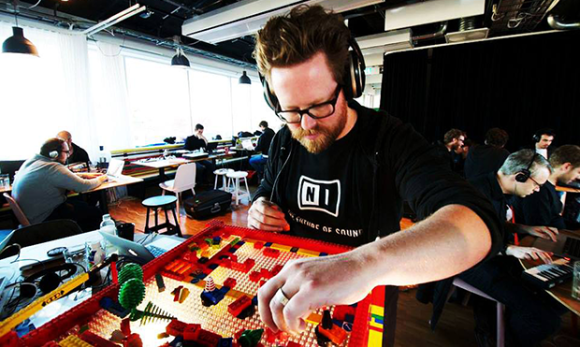
Last weekend wasn’t just about Maker Faire; in Stockholm there was another DIY festival celebrating the protocols that make electronic music possible. It’s MIDI Hack 2014, and [Kristian], [Michael], [Bram], and [Tobias] put together something really cool: a Lego sequencer
The system is set up on a translucent Lego base plate, suspended above a webcam that feeds into some OpenCV and Python goodness. From there, data is sent to Native Instruments Maschine. There’s a step sequencer using normal Lego bricks, a fader controlling beat delay, and a rotary encoder for reverb.
Despite being limited to studs and pegs, the short demo in the video below actually sounds good, with a lot of precision found in the faders and block-based rotary encoder. [Kristian] will be putting up the code and a few more details shortly. Hopefully there will be enough information to use different colored blocks in the step sequencer part of the build for different notes.















There was a MIDI festival here in Stockholm and I didn’t know about it?! Son of a…
That guy really looks like Will from Tested.com
^^ I thought the same thing.
No I don’t.
Oh, wait a second.
I kinda do.
Yea, he really does… I actually thought it was him at first, but when he yelled I quickly realized it wasn’t…
Here I was hoping for a more…mechanical…solution, but instead we have this.
I just recall the old manuals from Lego Expert Builder sets; one included an image of this machine that used a mechanical “cam-like” sequencer using the linked-belt treads and small bricks (with about four or five “channels”), a motor/gear-train to drive it all, etc; it was a simple “programmable” system…
I’m a fan of this one:
http://vimeo.com/90101413
Thank you for not saying “Legos”
Orwell would have something to say to you.
Wasn’t it Orwell who wrote an essay on “onto vs on to”, which is correct?